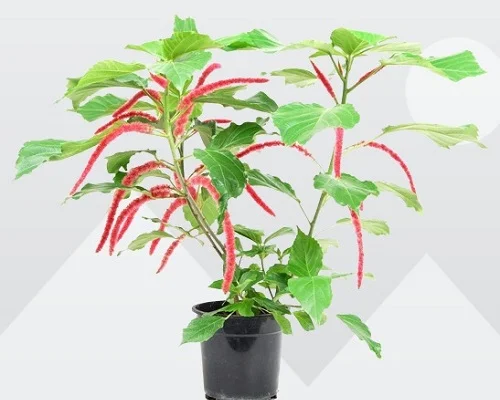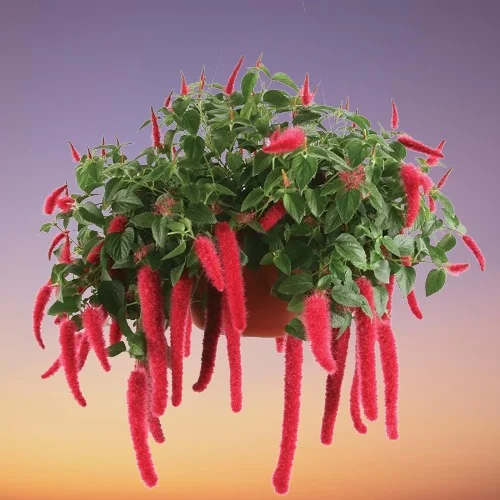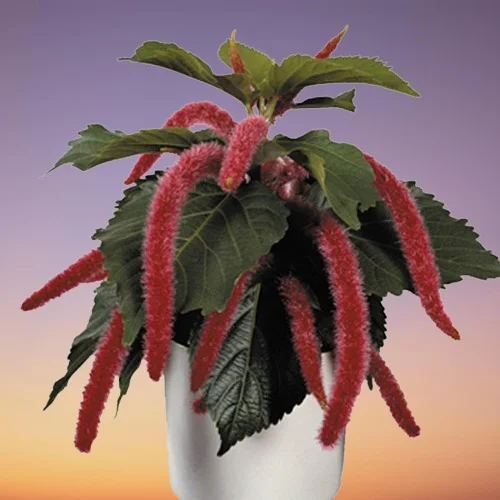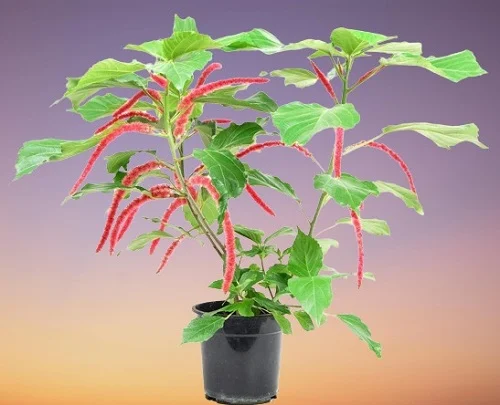12 Reasons Why Chenille Plant Leaves are Turning Yellow and Remedies
Some links in this post may be affiliate links
Chenille Plant leaves are turning yellow due to insufficient lighting, poor quality soil, dry air, pest infestations, root-rot, improper feeding, inconsistent watering among others.
Chenille Plant, botanically called Acalypha hispida, also called Red Hot Cat Tail, Monkey Tail, Foxtail or Philippine Medusa is a popular houseplant with pendulous, brilliantly colored, furry flowers which are spectacular in a hanging basket or on a pedestal.
Acalypha hispida flourishes in bright indirect light, average warmth of 18-280C, humidity of 55-70% and moderately moist, rich, well-drained soil coupled with fortnightly feeding in spring and summer. Learn how to grow and care for Chenille Plant.
Failure to meet these conditions may cause the leaves to turn yellow and die. Below are 12 causes of yellow leaves on Chenille Plant and how to fix them.

12 Causes of Yellow Leaves on Chenille Plant & Solutions
1. Insufficient lighting
Enough light is required for photosynthesis, the process of food making in plants, which is needed for growth and energy for the plant.
Too little light means that the plant cannot make adequate food for growth and development which causes the leaves to turn yellow, brown and die.
How to fix itPosition your Chenille Plant in a spot where it will receive bright indirect light or instal a grow light if the natural lighting is not enough.
2. Poor quality soil
Poor quality soil which does not drain easily will become compacted or soggy which will lead to reduced growth, yellowing and death of leaves.
How to fix itGrow your Chenille Plant in loose, well-draining soils which does not get soggy. A mix of 2 parts all purpose potting soil and 1 part perlite or vermiculite (for drainage) is ideal for this plant.
3. Dry air
Dry air will result in too low humidity causing the plant to stop growing, develop yellow leaves and begin to die.
How to fix itChenille Plant grows best in a humidity of 55-70%. To raise humidity, set the pot on a wet pebble tray, use a cool mist humidifier or grow the plant in a bathroom and other humid areas in the home.
4. Pest infestations
Chenille Plant is prone to mealybugs, whiteflies and spidermites. The sap-sucking insects will cause wilting, reduced growth and yellowing of leaves.
How to fix itEnsure that your Chenille Plant is healthy at all times by giving it the proper growing conditions.
To discourage pest infestations, increase the humidity as these pests are more common in dry conditions.
Keep the plant well pruned by removing spent flowers, dead and yellow foliage to minimize pest infestations.
Seperate the affected plant from the rest of the plants to reduce spread and treat it with insecticidal soap or neem oil. Make sure to follow the manufacturer's recommendations.

5. Root-rot disease
Chenille Plant is prone to root-rot, a fungal disease that is prevalent in soggy soil. It is characterized by wilting, drooping, yellowing and leaf drop.
How to fix itSlip the Chenille Plant out of its pot and inspect the roots. Brown-black mushy roots indicate root-rot, trim them off and treat the healthy roots with a copper-based fungicidal solution.
Disinfect the pot with the fungicidal solution or use a fresh pot to repot the plant in fresh, free-draining soil.
Keep the plant dry for some time before resuming watering to give it time to recover.
Use a pot that has a drainage hole and well-draining soil to prevent waterlogging in the future.
Decrease watering in fall and winter as growth is minimal at this time, therefore, the plant does not require a lot of water.
6. Improper feeding
Overfeeding a Chenille Plant will cause the roots to die due to fertilizer burn. As such, the roots cannot take up nutrients and water required for photosynthesis, thus the the leaves turn yellow and drop.
Underfeeding means the plant will not get enough nutrients needed for growth, therefore, the leaves turn yellow, brown and fall off.
How to fix itFeed your Chenille Plant with a phosphorous-rich, water-soluble fertilizer every 2-3 weeks in spring and summer for a lush, heathly growth.
Do not feed in fall and winter to prevent fertilizer burn and yellowing as growth is minimal at this time.
7. Being extremely pot-bound
Chenille Plant grows best when slightly root-bound but when extremely pot-bound the leaves begins to wilt, yellow and eventually die.
This is because the roots have filled the pot meaning there is very little soil to hold water when watered. Therefore, water needed for photosynthesis is not available which causes the leaves to turn yellow and begin to die due to lack of food.
How to fix itCheck the bottom of the pot, if a lot of roots are growing through the drainage hole, repot your Chenille Plant into a pot one size larger than the current one.
Repot the plant at the beginning of the growing season when it becomes extremely pot-bound. Confirm that the pot has a drainage hole and the soil is well-draining. Check out these pots with drainage holes on Amazon.
8. Underwatering
Underwatering means that there is too little moisture in the soil for the plant to take up to the leaves to make food for growth. Inadequate food causes the leaves to turn yellow, brown and eventually die.
How to fix itWater your Chenille Plant when the top 2-3 inches of soil feel dry and do not allow the soil to dry out completely. Do not water on a schedule.

9. Overwatering
Overwatering results in soggy soil which leads to the death of the roots due to lack of oxygen. This implies that the plant cannot take up water to make food needed for growth and energy. Therefore, due to lack of food, the begin to turn yellow and fall.
How to fix itTo avoid overwatering, do not water your Chenille Plant on a schedule. Water the top 2-3 inches of soil to dry out.
Cut down on watering in fall and winter to keep the soil slightly moist.
Ensure that the pot has a drainage hole and that the soil is free-draining to prevent it from getting soggy.
10. Temperature stress
Extreme temperatures; either too cold or too hot due to drafts will result in reduced growth which will cause the leaves to wilt, turn yellow and eventually drop.
How to fix itKeep Your Chenille Plant away from drafts emenating from windy windows and doors, Ac units, hot surfaces, heating units, hot stoves and other others to maintain an average warmth of 18-280C.
11. Repotting shock
Repotting may cause the plant some shock which may cause some leaves to wilt and yellow before it can adjust the new growing conditions.
How to fix itTo minimize repotting shock, water your Chenille Plant thoroughly one day before repotting as a well hydrated plant experiences less shock and is easier to divide.
Avoid making too many changes at once. For instance, after repotting, maintain the plant in the same spot until it is well established before moving it to a new location.
12. Aging
As the Chenille Plant leaves mature, the older leaves turn yellow and die. Therefore, do not be alarmed, if one or two leaves yellow as this is a natural process.
You liked it? Share on social media.
Related Content
Amazon Associates Disclosure
Homeplantsguide.com is a participant in the Amazon Services LLC Associates Program, an affiliate advertising program designed to provide a means for sites to earn advertising fees by advertising and linking to amazon.com.



